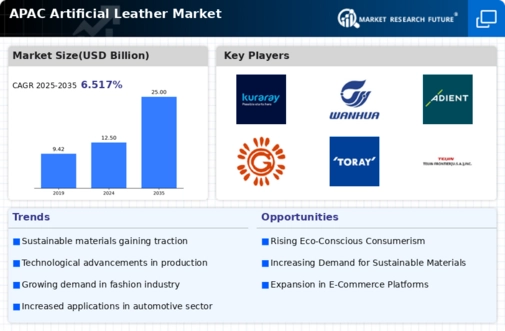The APAC Artificial Leather Market is experiencing significant growth, driven by increasing demand from industries such as automotive, footwear, furniture, and fashion. The competitive landscape in this market is characterized by a diverse set of players focusing on innovation, sustainability, and meeting consumer preferences for environmentally friendly options. Companies are investing in advanced technologies to improve the quality and performance of synthetic leather products while also enhancing their supply chain to ensure a competitive edge. The market is marked by intense rivalry, with players engaging in strategic partnerships, mergers, and acquisitions to expand their market reach and capabilities.
With a backdrop of changing consumer attitudes towards sustainability and durability, the APAC Artificial Leather Market is positioned for dynamic competition and evolution, illuminating numerous opportunities for growth and differentiation among market participants.Xinyu Power has carved out a notable presence within the APAC Artificial Leather Market through its commitment to quality, innovation, and customer-centric policies. The company emphasizes the development of high-performance materials that cater specifically to the needs of various applications, including automotive interiors and footwear.
Leveraging its advanced manufacturing technologies and methodologies, Xinyu Power positions itself as a reliable supplier backed by a robust distribution network across the APAC region. The company’s strengths lie in its ability to adapt to market trends and consumer preferences swiftly, enabling it to maintain a competitive advantage. With a strong focus on research and development, Xinyu Power continuously endeavors to enhance its product offerings, further solidifying its foothold in the artificial leather domain.Kuraray stands out due to its extensive range of products and solutions within the APAC Artificial Leather Market.
As a significant player in this segment, Kuraray focuses on providing innovative synthetic leather alternatives that cater to the evolving demands of various industries, including automotive and fashion. Its portfolio includes high-quality materials designed for durability and aesthetic appeal, which resonate well with market expectations. The company has established a solid market presence across the region, backed by strategic mergers and acquisitions that enhance its operational capabilities and broaden its reach. Kuraray's strengths lie in its technological expertise and commitment to sustainability, enabling it to address the critical market trends towards eco-friendly materials.
By continuously improving its product lines and actively engaging in partnerships, Kuraray aims to further solidify its position as a leader in the competitive landscape of the APAC Artificial Leather Market.



















Leave a Comment